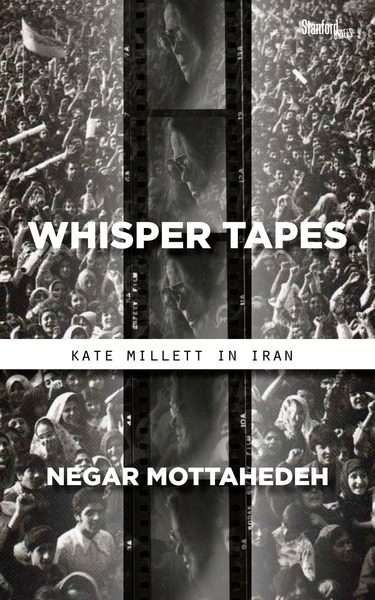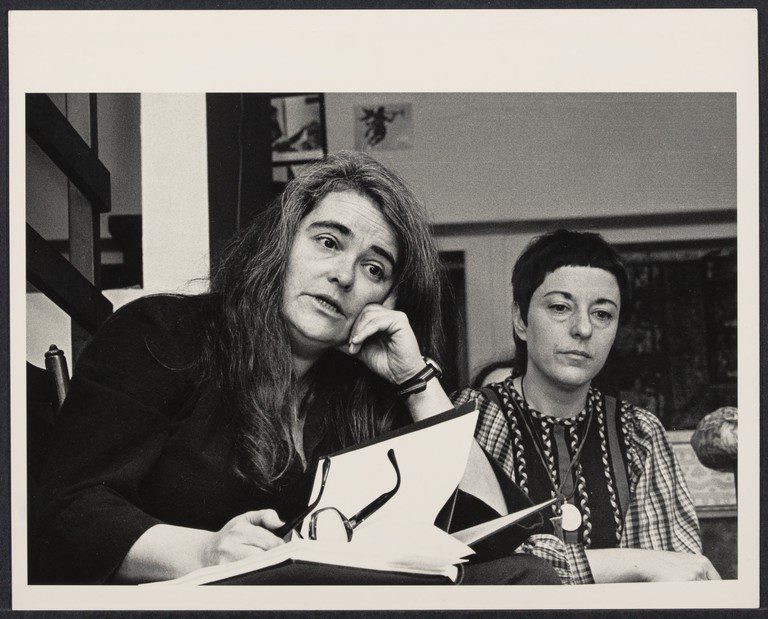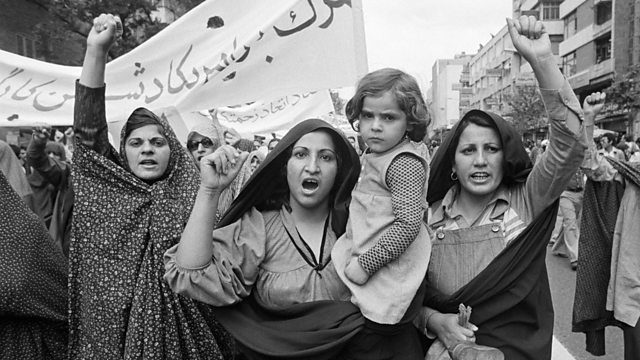
by Denise Gomez
On March 7, 1979, just one day before International Women’s Day, the highly influential American feminist scholar, Kate Millet, appeared in Tehran, in the Iranian Revolution’s afterglow. Invited alongside other prominent feminist scholars and activists to speak at a demonstration organized by Iranian woman activists, Millet was accompanied by her partner and $1,200 worth of recording equipment, but without any working knowledge of Persian. Millett spent her days wandering around with tape recorder in hand, documenting her observations and capturing the voices of protesting Iranian women. After returning to the United States, Millet used her memories and the tapes’ contents to write her 1981 book, Going to Iran. As a result of Millet’s excursion and the subsequent publication of her book, the United States’ media wrongly embraced her as an authoritative figure regarding the Iranian revolution despite her understandable shortcomings as an ally and friend of Iranian women. Mottahedheh’s study of Millet’s visit in Whisper Tapes provides its readers with profound insight into Millet’s travels as an activist, as well as into the liberationist messages of the Iranian revolution.

Kate Millett’s Going to Iran (1982)
Whisper Tapes challenges established ideas about the relationship between Iranian women and their Revolution. Carefully separating the rise of the Islamic Republic and the popular revolutionary movement, Negar Mottahedeh works against the major assumptions of western scholarship, where the arrival of the Iranian Revolution and the arrival of the Islamic Republic happen simultaneously and are seen to be one and the same thing. In this western version, the Iranian Revolution is an inherently Islamic revolution, which insisted on an instant curtailment of women’s rights. Mottahedeh works against this assumption by demonstrating how Iranian women saw their demonstrations and protests as a continuation of the Iranian Revolution itself, as well as a continuation of the Revolution’s principles of freedom and resistance to oppression in all forms. Mottahedeh pushes back on portrayals of the revolution as happening overnight, of opposition to Mohammad Reza Phalavi as monolithic, and of an inherently patriarchal protesting populace who betrayed their feminine revolutionary counterparts.
To situate her book and its actors, Mottahedeh places the Iranian Revolution within the context of, and in solidarity with, the Third World, a geo-political concept that dominated the western intellectual thinking at the time of the revolution. Under this principle, revolutionary cultures and thought flourished, and various marginalized groups positioned themselves to defend each other against all forms of exploitation. Western intellectuals’ left-leaning politics naturally aligned them against Iran’s Shah, and similarly influenced the politics of the western feminist circles. Millet and her French contemporaries, such as Simone de Beauvoir and Monique Wittig, who initially declared their solidarity with the Iranian Revolution, were unsettled by the ensuing proclamations of compulsory veiling. As Iranian women took to the streets in protest against these proclamations, their calls to action were widely ignored by the men who stood by their side during the Anti-Shah demonstrations. As equal participants of the 1979 revolution, women were in a sense betrayed by their fellow revolutionaries. Millet and the French identified with the Iranian women in protest, and understood their revolts against Khomeini’s proclamations as a continuation of a larger struggle against the patriarchy.

Kate Millett, 1977 (via Schlesinger Library)
Mottahedeh revitalizes this story by accessing what Millet could not due to her socially constructed state of “unknowledge” about Iran and its culture. As a result of her lack of knowledge, Millet cannot and does not fully see the movement materializing before her very eyes — but this does not make her experience a counterfeit one. Mottahedeh does not accuse Millet of playing the role of the arrogant westerner here, instead she is treated as a limited observer whose observations were skewed and incomplete. In so many ways, Mottahedeh, a researcher who focuses on various aspects of Iranian resistance and protest, has the expertise and knowledge for understanding the women’s protests that Kate Millet lacked. Mottahedeh’s Whisper Tapes is as much an expansion of her own research as it is an expansion of Millet’s Going to Iran. Mottahedeh’s work does not reject the material of the whisper tapes, it instead contextualizes and broadens Millet’s experience, observations, and recordings. To complete her project, Mottahedeh pulls from many theoretical works, such as Gayatri Chakravorty Spivak and Mladen Dolar but she extracts the majority of her citations from the tapes themselves or Millet’s book about her experiences on the ground. Through this very narrow focus, Mottahedeh is able to remain within the context of the tapes’ spaces and interact with the content of Miller’s tapes more deeply.
When listening to Millet’s recordings Mottahedeh noticed a second, background narrative in the political chanting and hushed conversations in Persian, behind the obvious, intended narrative of Millet’s tapes. Describing these surrounding acoustics as an unconscious layer to Millet’s recordings –whisper tapes — Mottahedeh uses these background voices to frame and inform her analysis of Millet’s visit to Iran. These voices both contradict and clarify Millet’s observations and revive the protestors’ aspirations in a way that complicates mainstream ideas of feminist consciousness in post-revolutionary Iran. Instead of tracing Iranian feminist consciousness to individual (anti-)religious sentiments or as reactions to western influence, Mottahedeh suggests the women’s protests emerged as a continuation of the 1979 revolution that called for planetary freedom and justice.

Women and the Iranian Revolution (via BBC)
Whisper Tapes is organized according to the Farsi alphabet, with each “chapter” named after a theme or symbol of the revolution, such as Chapter V, “Servat,” (Wealth) or Chapter XIII “Zan,” (Woman). Although disorienting and disjointed at times, Mottahedeh’s chapters are informed by the tapes’ evidence, which was captured haphazardly and at the mercy of 1979’s technological limitations. However, for Mottahedeh the fragmentary nature of the tapes’ narrative evokes the feeling experienced by listening to the recordings’ “whispered background.” Furthermore, Mottahedeh inaugurates this account with a section entitled “A Revolutionary Timeline,” where she lays out the revolution’s key dates for a reader’s reference. The introduction and conclusion, titled “Overture” and “Coda,” flank her alphabetically-organized segments, and provide readers with the theoretical, historical, and personal background necessary for digesting the bulk of her content.
Few books resemble Whisper Tapes in its organization, and few studies of the Iranian Revolution so thoroughly and fairly challenge misconceptions born from well-intentioned actions of politically progressive circles. Mottahedeh’s method of listening to the accidental voices of Millet’s background is inventive and produces refreshing scholarship that can be enjoyed, understood, and appreciated by academics and non-specialists together. By revisiting Kate Millet, Mottahedeh accomplishes the elevation and centering of oft-ignored voices.
![]()
You might also like:
The Strength of Women in the Iranian Revolution
The Public Archive: Qahvehkhaneh, Reading Iranian Newspapers
A Brief History of Feminism by Patu (illustrations) and Antje Schrupp and translated by Sophie Lewis (2017)
Why I Ban the Word “Feminism” from My Classes
![]()



